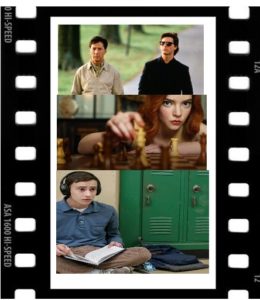This article by Annie Conner captures positive representations of autism in pop culture and explores how representations have changed over the years.
Introduction
Since autism was first identified some 70 years ago, relative progress has been made in how we respond to it. Specifically, a lot of headway has been made with regard to rights for people with autism. To that point, we spoke about “Autism Rights” in a previous article outlining some of the legislation and guidance published to assist those living with autism. This has undoubtedly led to improvement in the lives and conditions of many on the autism spectrum.
When it comes to the ongoing normalisation of autism however, there is more that comes into play than legislation. Specifically, representation in popular culture can go a long way toward de-stigmatising the condition –– and thereby leading many to treat those on the autism spectrum with more understanding and respect.
Here, we want to look at some of the more positive representations of autism we’ve seen in pop culture.
https://www.youtube.com/watch?v=mlNwXuHUA8I
Rain Man
Possibly the most well-known and arguably even the first major portrayal of an autistic character, Rain Man was a superbly executed, award-winning film. Dustin Hoffman played Raymond Babbitt, a man presenting many significant characteristics of autism and being cared for by his younger brother Charlie (Tom Cruise). Whilst the film was a breakthrough in humanising those with autism, there were aspects that we would consider troubling nowadays. It was ultimately suggested that someone on the higher end of the autistic spectrum (or “high savant”), though high-functioning, would possibly be better off institutionalised –– which is not always accurate.
Nevertheless, the film also demonstrated that real, human connections can be built with autistic patients. Furthermore, the problematic aspects of Rain Man serve as reminders now of how much our understanding of the condition has expanded since the film’s 1988 release.
https://www.youtube.com/watch?v=oZn3qSgmLqI
The Queen’s Gambit
Using an early example from modern literature, “The Queen’s Gambit” indirectly approached the subject of autism in a fascinating and inspiring way. This story thrives in large part because it is rooted in a true understanding of the world of chess in which it takes place. Indeed, background on “The Queen’s Gambit” on Scribd reveals that the author of the book was himself a competitive chess player. As much as this authenticity fuels the story’s relatable legitimacy however, it is the Netflix adaptation’s portrayal of the main character that makes it truly powerful.
Beth Harmon (Anya Taylor-Joy), whilst not declared autistic, was heavily coded as such. And rather than playing into stereotypes (one can just imagine how a lazy interpretation of an autistic chess prodigy would come across), Taylor-Joy gives the role complex and dynamic layers. There are both social difficulties and focused areas of brilliance typical of some on the autism spectrum, but neither is taken to an extreme.
Atypical
Bringing us into most recent years, Atypical is an American Netflix show documenting the life of an 18 year old with autism –– encountering romance, independent living, and other very typical late-teen experiences. First aired in 2017, the show became quite popular. The Guardian’s review of series 4 in particular outlines how the show brings focus to those with autism alongside teens living with varying disabilities –– offering them all the representation they deserve.
https://www.youtube.com/watch?v=kVS-6k2tQAA
The Silver Linings Playbook
Another book later adapted into a film, “The Silver Linings Playbook” is a story about a man with bipolar disorder returning to his family following a period of being institutionalised. The corresponding film takes us on a journey into understanding the condition, and shows us a perspective of the world we might otherwise be unable to comprehend. And while the story does not explicitly address autism, an ABC article on “The Silver Linings Playbook” adaptation revealed that familiarity with autism was actually an important factor for numerous people involved. Director David O’ Russell was able to draw from his personal experiences having a son with bipolar disorder who was initially diagnosed as autistic. So, while the film does not deal with autism directly, it is still an informed and heartfelt demonstration of the fact that people who might not be deemed “normal” deserve respect and understanding.
The examples above give a strong indication that times are changing, with the availability of books and films offering representation to autistic individuals and those with other commonly misunderstood conditions. While the above is not an exhaustive list of these books and films, we hope to have offered a few of the most worthwhile examples.
_____________________________________________________________________________
If you need help looking for services for an individual with an autism spectrum condition, we will do our best to help. Click below for the Autism Placement Support Service.






